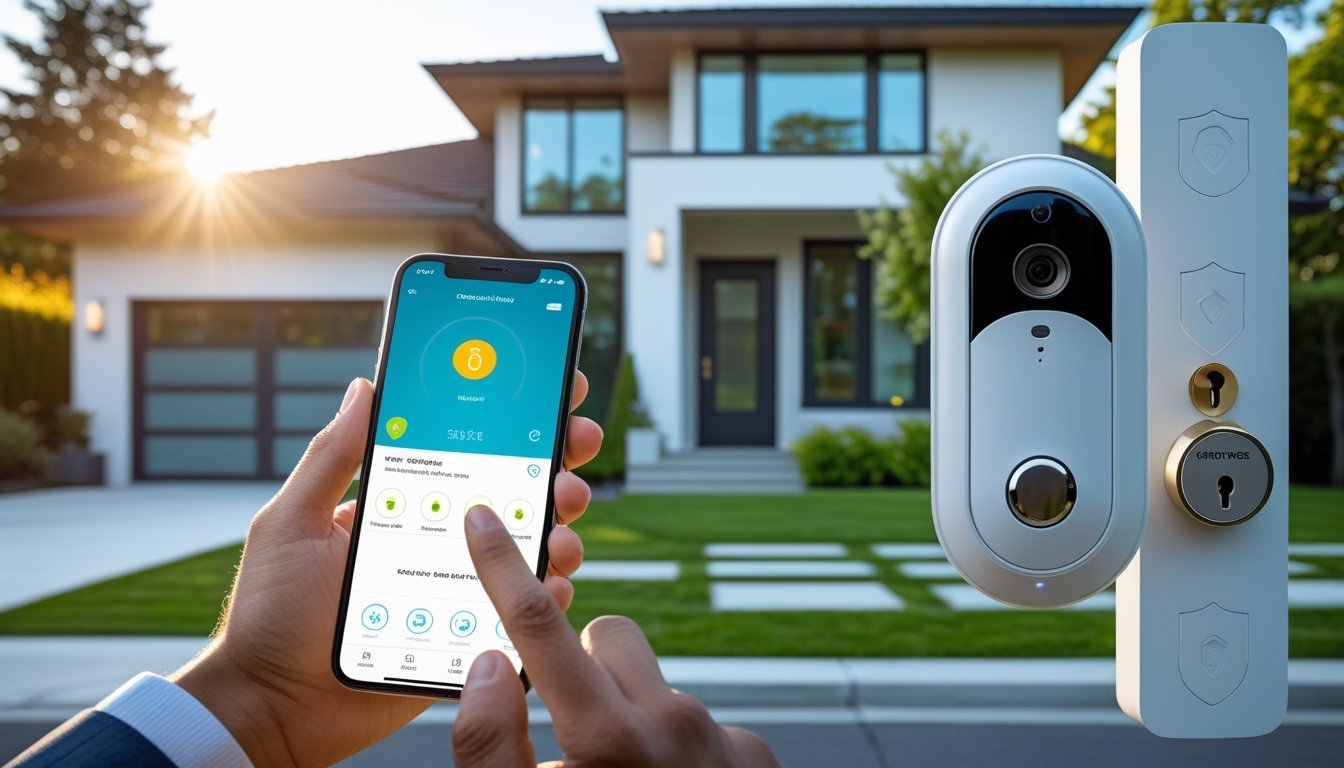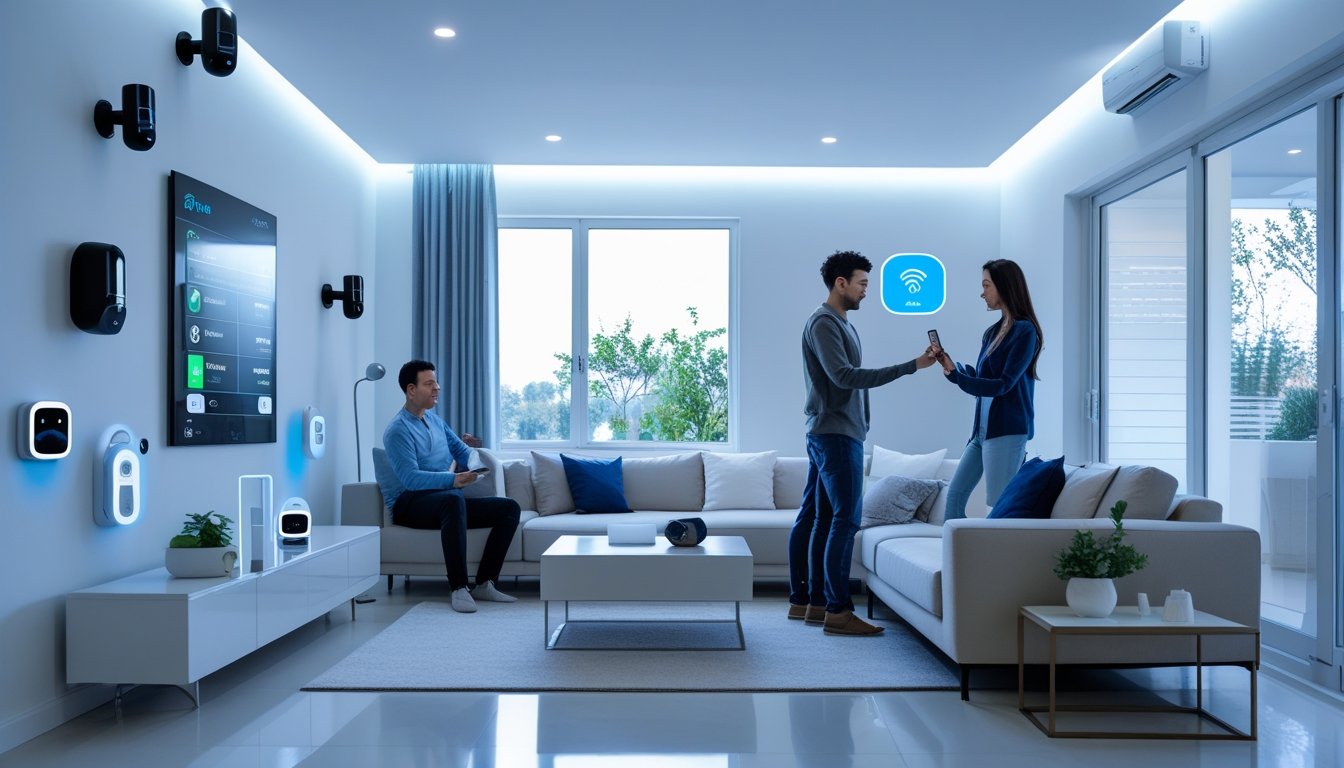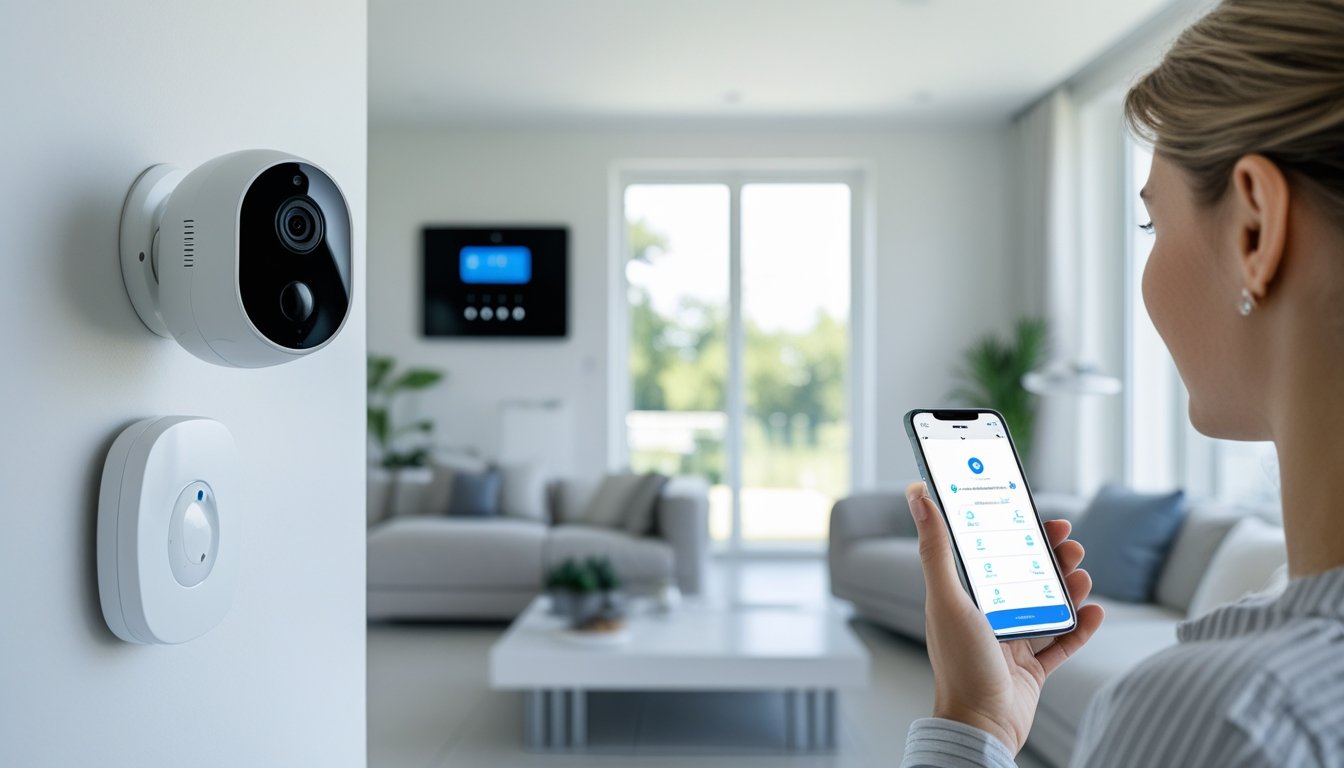Late updated: 17 Nov 2025 11:11
Written by: Elena Prescott
Innovative Home Security Solutions For Modern Living: Enhancing Safety Today
In the ever-evolving landscape of modern living, safeguarding our homes has taken on a new dimension with the rise of innovative home security solutions. From smart locks to AI-powered surveillance cameras, new technologies are transforming how we protect our loved ones and belongings. These advanced systems not only deter intruders but also seamlessly integrate into our smart homes, offering unparalleled convenience and control.

As technology continues to advance, the integration of connected devices into our home security systems has proven to be a game-changer. Smart ecosystems enable us to manage our security measures remotely and provide real-time alerts, fostering a sense of security and peace of mind. Homeowners can now experience a blend of efficiency and state-of-the-art technology that redefines the concept of modern living.
By diving into home security innovations, we can explore the myriad options that cater to our unique needs and preferences. This exploration reveals products and solutions that are not only user-friendly but also adaptable to various living environments. Whether opting for a DIY setup or a professionally installed system, these advancements bring a multitude of possibilities for safeguarding what matters most.
Key Takeaways
- Innovative security solutions integrate with smart home systems.
- Connected devices enhance real-time monitoring and control.
- Advanced technology offers customisable protection options.
Key Innovations in Home Security Solutions
Modern home security solutions have seen a significant evolution, embracing advanced technologies to offer improved protection and convenience. In this section, we'll explore notable innovations like AI integration, enhanced video surveillance, sophisticated alarms, and smart access controls that are reshaping residential security.
Integration of AI and Smart Technologies
Artificial Intelligence is transforming how we approach home security. AI-powered systems monitor activities in real-time, using algorithms to identify unusual patterns that may signify a threat. These systems can differentiate between benign movements, like pets wandering, and more sinister actions, reducing false alarms effectively.
AI also plays a role in providing proactive security recommendations. For instance, if a smart camera recognises frequent movement in a specific area, it can suggest improvements or adjustments. Integrating AI with smart home devices allows for seamless control through smartphones or voice commands. This provides homeowners with immediate access to security status and allows them to respond promptly to any alerts, increasing overall safety.
Advanced Video Surveillance Features
Modern video surveillance has evolved far beyond simple cameras. Today, many home security systems feature high-definition cameras with capabilities like night vision and wide-angle lenses, delivering clear images regardless of lighting conditions. These cameras are often equipped with motion detection, sending instant notifications when unexpected movements are detected, allowing for prompt action.
Smart cameras with cloud storage options enable homeowners to access live or recorded footage remotely, ensuring they can monitor their space from anywhere. Additionally, facial recognition technology allows the system to differentiate between family, friends, and strangers, enhancing personal security. This technology provides a more personalised security setup, adjusting responses based on the individual identified.
Modern Alarms and Threat Detection
Alarm systems have progressed significantly with the integration of advanced sensors and AI. Our security solutions now include alarms capable of detecting a wide array of threats such as fire, carbon monoxide, and even water leaks. These systems provide instant alerts to both homeowners and, if desired, professional monitoring services.
Customisable alerts and notifications mean users can tailor responses to specific scenarios, ensuring they always receive pertinent information without unnecessary interruptions. The intelligent threat detection capabilities analyse sensor inputs to quickly identify real emergencies, reducing the frequency of false alarms and increasing the overall reliability of the security system.
Smart Access Controls and Biometric Security
Smart access controls have revolutionised the way we secure entry points in our homes. With smart locks and biometric systems, traditional keys are becoming obsolete. Homeowners can now use fingerprint or facial recognition for entry, providing a higher level of security and convenience.
Smart locks offer functionality like remote locking and unlocking via a smartphone, making it easy to grant temporary access to visitors or service providers. Implementing biometric security ensures that only authorised individuals can gain access, which is invaluable in preventing unauthorised entries. This combination of advanced technologies ensures that
Smart Ecosystems and Connected Devices

Our homes are becoming smarter, with advanced security solutions now seamlessly integrated into interconnected ecosystems. By aligning smart home devices under unified platforms, users can achieve enhanced security and convenience.
Integration with Leading Smart Home Platforms
Connecting devices through platforms such as SmartThings, Apple HomeKit, and Google Home simplifies smart home management. These ecosystems allow for cohesive interaction among devices, promoting comprehensive security. For example, incorporating smart home security systems like SimpliSafe or ADT with automated lighting and smart doorbells elevates protection. This integration enables dynamic responses—lights can deter potential intruders by simulating occupancy, and smart doorbells, equipped with two-way audio and real-time alerts, let us monitor our homes even when away.
Automation and Remote Monitoring
Automation takes smart home security systems to the next level by providing effortless control and monitoring. With IoT technology, users can remotely access and manage their security systems using smartphones. This capability includes adjusting smart lighting and configuring security cameras, even during an internet outage. For instance, motion sensors or window sensors can trigger alerts, sent straight to our devices, ensuring constant vigilance. Coupled with cloud storage, we can review security footage and data logs at our convenience, making remote monitoring not just possible but also highly practical.
Enhancing Security with Smart Detectors and Sensors
Smart detectors and sensors play a pivotal role in fortifying home security. Devices like motion sensors, window sensors, and carbon monoxide detectors can be integrated into a unified smart home ecosystem for thorough protection. Advanced IoT-connected devices like those from Arlo and Ring boost security by delivering instant alerts to our phones. Cameras offer real-time surveillance, while smart lighting can improve visibility around our premises. With these devices communicating within a connected ecosystem, we achieve a secure environment where every potential threat is promptly addressed.
Frequently Asked Questions

Exploring cutting-edge home security enhances our ability to protect our homes. Advanced technologies like AI and IoT offer detailed insights and significant improvements in intruder deterring, device safety, and more.
What are the latest advancements in smart home security technology?
Recent advancements include smart locks with facial recognition, AI-equipped doorbells, and comprehensive systems that integrate seamlessly with smart home automation setups. These technologies provide heightened security by allowing homeowners to control devices remotely and receive instant alerts on unusual activities.
How can artificial intelligence be integrated into home security systems?
AI enhances home security by enabling devices to analyse data in real time. This includes recognising authorised individuals, identifying suspicious behaviour, and adjusting security measures accordingly. AI systems can also predict potential vulnerabilities and suggest proactive steps to fortify safety measures.
What are the most effective strategies for deterring burglars with technology?
Utilising smart surveillance cameras and motion detectors are practical strategies to deter intruders. Installing smart lighting that mimics occupancy and employing noise-triggered alarms are also effective. These measures work by creating an impression of constant vigilance, thus discouraging potential threats.
How does Internet of Things (IoT) enhance residential security features?
IoT allows devices to communicate with each other, creating a cohesive security ecosystem. Through this interconnectivity, homeowners can monitor and control security systems via smartphones or computers, providing flexibility and assurance from anywhere. IoT-enabled systems can also automate responses to potential threats for increased protection.
What should homeowners look for when choosing a modern security solution?
Homeowners should consider systems that offer comprehensive coverage, user-friendly interfaces, and strong integration abilities with existing smart home devices. Security solutions that provide real-time monitoring, proactive threat alerts, and robust data encryption are essential characteristics to seek out.
How can residents ensure their security devices are safe from cyber threats?
To secure devices from cyber threats, homeowners should regularly update device firmware, use strong, unique passwords, and enable two-factor authentication. It is also crucial to monitor network activity for any abnormalities and use reputable security software to safeguard personal data and maintain device integrity.
